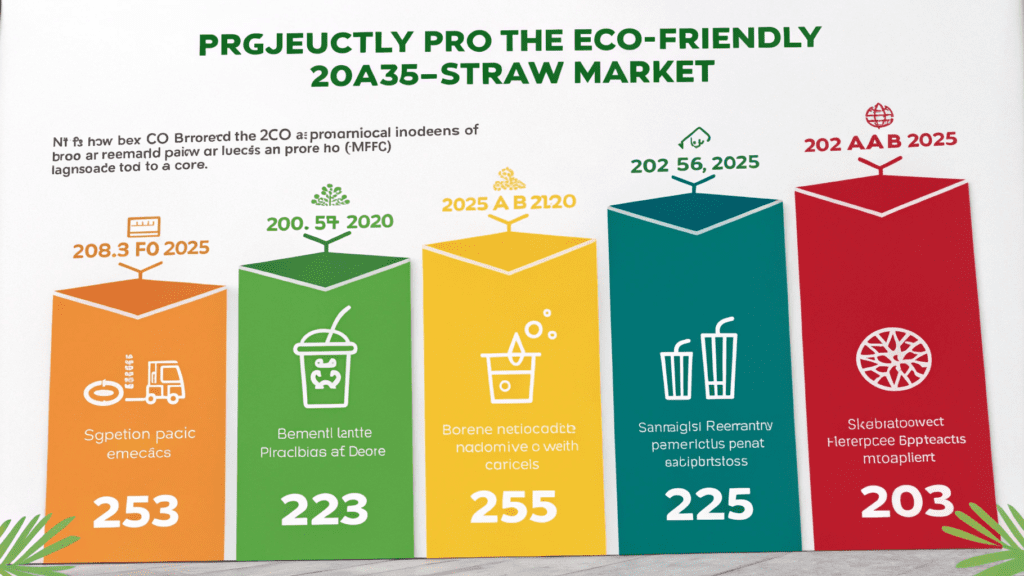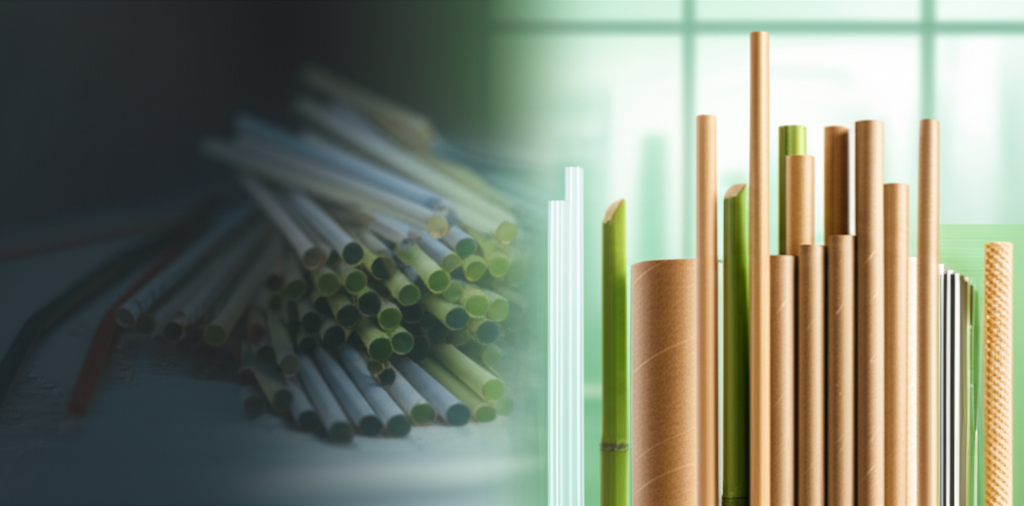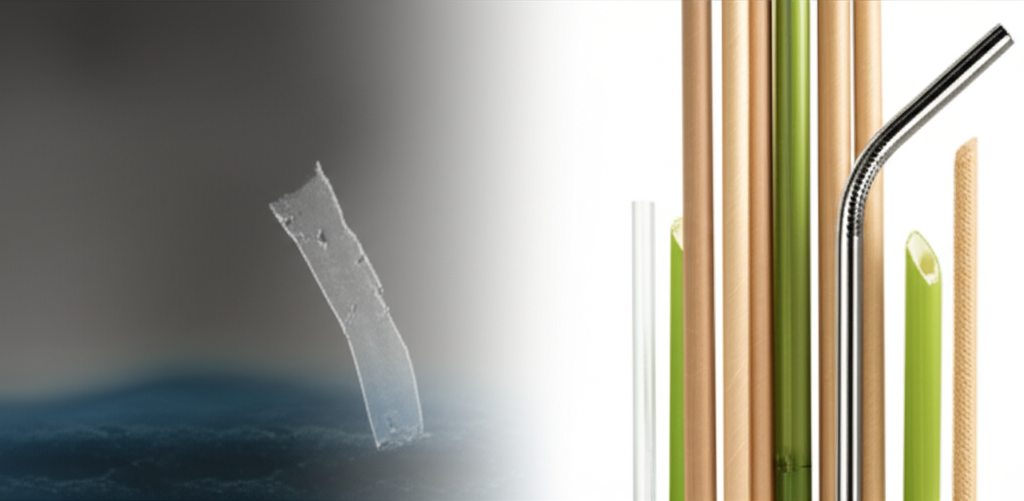
The Shifting Tides: Why Single-Use Plastic Straws Are No Longer Viable for Businesses
The landscape for businesses, particularly within the dynamic foodservice and hospitality sectors, is undergoing a profound transformation. What was once a ubiquitous convenience—the single-use plastic straw—is now a significant liability. Governments globally are escalating bans and restrictions on single-use plastics, including straws, with notable directives from the European Union and varied legislative actions across numerous U.S. states. This shifting regulatory environment necessitates a critical pivot for businesses: adopting sustainable alternatives is no longer just an environmental aspiration but a fundamental requirement for compliance and operational continuity.
This imperative also unveils a massive market opportunity. The global eco-friendly straws market, valued at approximately USD 12.3 billion in 2025, is projected to nearly double to USD 25.1 billion by 2035, demonstrating a robust 7.3% Compound Annual Growth Rate (CAGR). This significant growth trajectory clearly signals a definitive market shift and a prime opportunity for early adopters to secure market leadership and competitive advantage. Beyond mere compliance, embracing sustainable straw solutions directly elevates brand reputation and fosters consumer trust. With approximately 80% of consumers actively preferring eco-friendly products, making the switch to natural straws is a direct route to enhanced brand image, attracting a growing segment of environmentally conscious consumers and differentiating your business in a crowded marketplace.

From Pollution to Progress: The Imperative for Natural Straw Solutions
The true cost of plastic straws extends far beyond their initial purchase price. These single-use items, primarily made from polypropylene (PP), a petroleum byproduct, represent a severe environmental burden. They are non-biodegradable, persisting for over 200 years and breaking down into pervasive microplastic pollution that infiltrates our soil, water, and even marine ecosystems. The devastating harm to marine life, which frequently ingests these fragments, translates into significant business risks: negative public relations, potential regulatory fines, and diminishing consumer loyalty in an increasingly eco-aware society.
Yet, the concept of a natural drinking tube is far from new. Our current transition back to sustainable materials is, in many ways, a sophisticated evolution of historical practices. Tracing the roots of drinking straws reveals ancient Mesopotamians and East Asians utilizing hollow reeds and bamboo for sipping beverages around 3000 BCE. The 19th century saw the widespread use of rye grass straws, though these had their own limitations, often imparting an undesirable grassy flavor or quickly disintegrating. It was Marvin Stone’s 1888 innovation of the paper straw that marked a significant step towards a manufactured, yet still plant-based, solution. Today, this historical lineage culminates in a modern re-embrace of plant-based solutions, driven by technological advancements and ecological urgency. For a deeper dive into sustainable business practices, explore howmomoio.com/sustainability-solutionscan help.
The diverse world of eco-friendly straws now showcases a broad spectrum of natural and sustainable materials at the forefront of innovation. This includes advanced paper (particularly virgin kraft, favored for its purity and strength), durable bamboo, Polylactic Acid (PLA) derived from plant starches, and the reusable options of metal and glass. Furthermore, cutting-edge plant-based alternatives like rice, seaweed, cornstarch, pasta, and wheat are entering the market, offering unique properties such as edibility. Ongoing research and development efforts are keenly focused on enhancing durability, improving water resistance through advanced coatings (like PFAS-free options), and reducing production costs to meet demanding B2B needs, ensuring quality without compromise.

Strategic Advantages: Why Natural Materials Outperform for Your Business
Embracing natural straw solutions offers significant strategic advantages, moving beyond mere compliance to foster true operational excellence and supply chain resiliency. Diversifying your straw supply chain with multiple natural material options reduces reliance on single-source traditional plastics, mitigating supply disruptions and price volatility that have become increasingly common. Furthermore, the long-term operational benefits include reduced waste management costs, simpler adherence to increasingly complex environmental regulations, and a clear pathway to a more circular economy. For streamlined B2B sourcing of eco-friendly products, consider platforms likemomoio.com/b2b-sourcing.
Choosing the right sustainable straw for your business requires a nuanced understanding of the available options. Here’s a comparative analysis of leading natural straw materials, outlining their specific B2B advantages, ideal use cases, and key considerations:
| Paper (Virgin Kraft) | High purity, superior strength, biodegradable. Excellent for QSRs, cafes. Market projected to reach USD 6.17 billion by 2030 (15.6% CAGR). | Watch for sogginess if not properly coated; check for PFAS-free certification. |
| Bambu | Reusable, natural aesthetic, lightweight, chemical-free. Preferred in strict anti-plastic regions (e.g., some EU countries). | Requires cleaning for reuse; can absorb liquid over extended use. Bamboo straw market to USD 320.1 million by 2035 (7.8% CAGR). |
| PLA (Plant-Based Bioplastic) | Compostable, resembles traditional plastic, suitable for wider diameters (smoothies, bubble tea). | Requires industrial composting facilities; can soften at high temperatures. Often accused of “greenwashing” if not properly disposed of. |
| Sugarcane Bagasse | Sturdy, long-lasting, biodegradable. Made from upcycled waste fibers from sugarcane. | Relatively new to market; broader adoption is increasing. |
| Reusable (Stainless Steel/Glass) | Highly durable, long-term solution, non-toxic. Ideal for premium and eco-conscious establishments (e.g., high-end restaurants, hotels). | Requires washing and sanitation; can be dangerous if used while walking (metal/glass); potential temperature conductivity. |
| Rice/Pasta/Wheat Straws | Edible (rice/pasta), fully biodegradable, unique consumer experience. | Can alter taste slightly; prone to sogginess (pasta); higher cost; specific use cases. |
| PHA (Polyhydroxyalkanoate) | Marine-biodegradable (decomposing in 58 days in controlled environments), resembles plastic, withstands high temps. FDA-approved. | Newer technology, potentially higher cost; supply chain still developing. |
Addressing common concerns associated with early natural straw versions, such as sogginess or taste alteration, is crucial. Modern innovations have largely overcome these hurdles. The availability of advanced solutions like PFAS-free paper straws and marine-biodegradable PHA straws ensures both consumer safety and a superior user experience. For businesses navigating these choices, expert guidance on sustainable packaging solutions, like those offered atmomoio.com/sustainable-packaging, can be invaluable.
Proactively adopting these sustainable alternatives positions your business as an industry leader. North America and Europe, driven by stringent regulations and high consumer awareness, are significant markets for these innovations. For example, the paper straw market alone is projected to reach USD 6.17 billion by 2030 (15.6% CAGR), and the bamboo straw market to USD 320.1 million by 2035 (7.8% CAGR). This forward-thinking approach not only attracts the growing eco-conscious customer base but can also lead to significant cost savings through reduced environmental footprints and avoidance of potential regulatory fines. To understand the latest regulatory shifts impacting your business, refer to the European Union’s Single-Use Plastics Directive atec.europa.eu. For market data and trends in eco-friendly products, reputable sources such asfuturemarketinsights.comoffer comprehensive insights.

Embrace the Future: Your Next Step Towards Sustainable Operations
The global pivot away from single-use plastics towards natural material straws is undeniable and accelerating. Governments, consumers, and businesses worldwide are recognizing the urgent need for change. Adapting to this irreversible shift is not just an option but a strategic imperative for businesses aiming for long-term relevance and competitive advantage in a sustainability-driven market. Those who delay risk falling behind.
The benefits of this transition are compelling and multifaceted: enhancing your brand image, ensuring regulatory compliance, optimizing operational efficiency by reducing waste and avoiding fines, and capturing a significant share of the rapidly growing eco-conscious market. Investing in natural materials is a critical step towards future-proofing your business and securing a more profitable, sustainable future. Stay informed on global plastic pollution efforts and solutions by visitingourworldindata.org.






